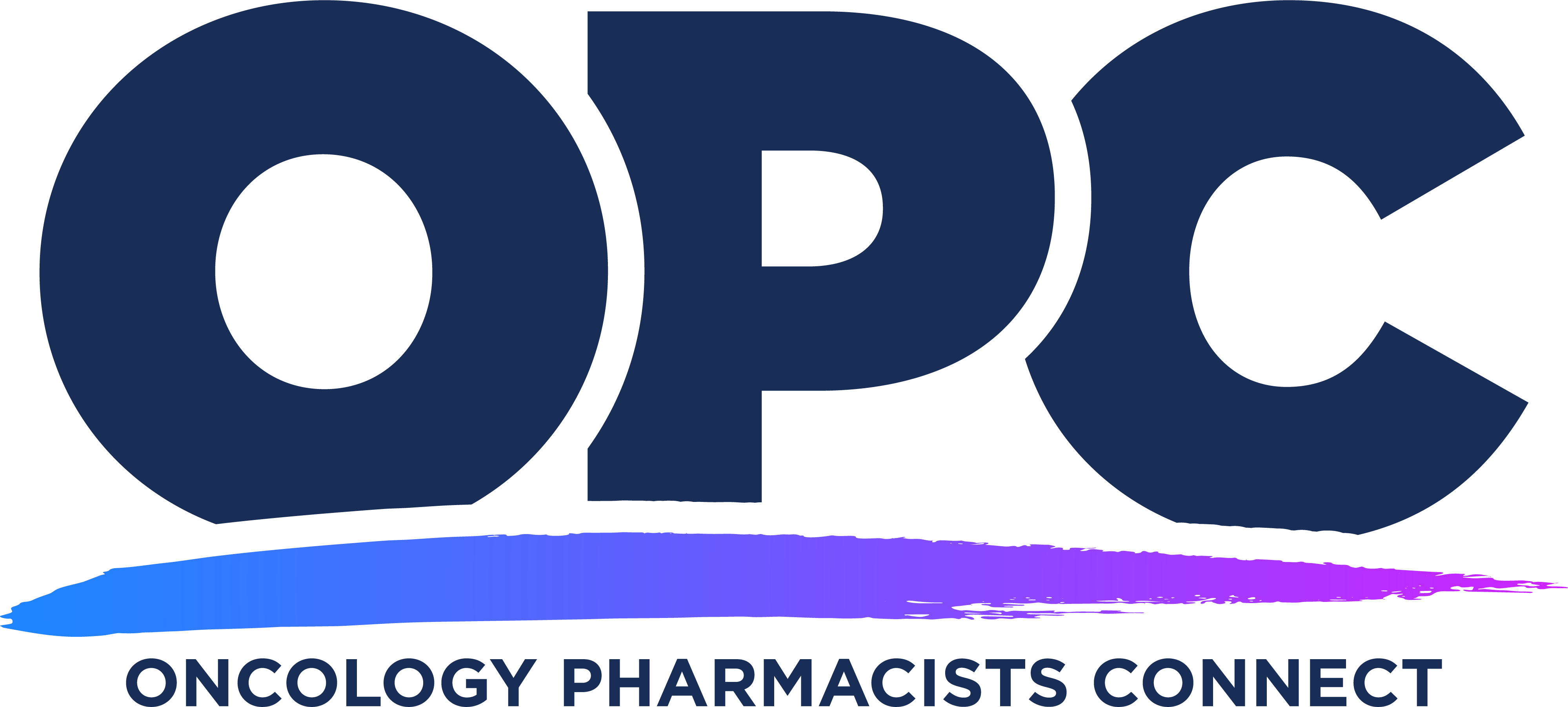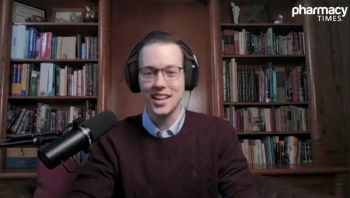
Expert: Ensuring Access to Oncology Drugs in Community Cancer Centers Is Crucial

Andre Harvin, PharmD, MBA, discussed the use of immunotherapies in melanoma and broader challenges with access to oncology care in rural or underserved communities.
In an interview with Pharmacy Times at the inaugural Oncology Pharmacists Connect conference, Andre Harvin, PharmD, MBA, executive director of pharmacy, oncology at Cone Health, discussed the use of immunotherapies in melanoma and broader challenges with access to oncology care in rural or underserved communities.
Q: How has use of immunotherapies and targeted therapies changed in melanoma?
Andre Harvin, PharmD, MBA: Well, we're seeing a lot of new evidence that's come out recently, there's a lot that has changed for us. And so, there's more options for patients. There are things that patients need to consider in terms of what that therapy will look like and how long they plan to be on therapy. But what's great is that the evidence continues to improve, so there are many opportunities when we look at patients and we stratify them based on their risks, based on their potential tolerance. And obviously, what the end looks like for them. We have more and more information that's coming out and more and more targeted therapies. And so, what we continue to see over the last decade is better outcomes, we continue to see better treatment-related adverse events. Those are things a decade ago in practice we really only dreamed of. And so, there's still that burden of disease that's out there, we hope to continue to see research in this area, we hope to continue to see additional drug development, and some of the studies that came out of ASCO have been really incredible. We still have a ways to go. But it's improved so much over these last several years and it's really just been a benefit for our patients.
Q: How or why are immunotherapies effective in melanoma?
Andre Harvin, PharmD, MBA: Well, I mean, when you look at immunotherapies, it really starts to target what what the root cause is. And so, the great thing about that is it spares the rest of the cells in the body, right? So, things that used to just be incredibly toxic, and we start to think about the loss of hair, that nausea, vomiting, it's not that those are all completely gone now that we have these more targeted immunotherapies. But it is, you know, reduced dramatically. And so, the really good thing about it is we can keep patients on therapy longer without them necessarily experiencing those side effects that previous generations of therapy would force them to come off [the treatment]. So, what that does is it gives them a better fighting chance, right? It allows them to have that tolerance and those medications for a much longer period of time. And it allows us to focus on really what the ailment is, rather than what the strategy was in the beginning, [where] like you're just going to kind of slash and burn everything. Well, now we can be more targeted, we can be focused on those bad cells, right, which shouldn't be there, and spare everything else within the body for the most part.
Q: What role do pharmacists play in immunotherapies for melanoma?
Andre Harvin, PharmD, MBA: Yeah, pharmacists will play a significant role. I think the most important thing to know is that oncology care really is a village; no one person is going to be an expert in everything. As we continue to see new data, more and more information that's coming out, it's really tough for everyone to keep up on it, especially depending on where you're providing that therapy. So, we come more from a community cancer center, so being able to send a large portion of our team to places like HOPA or ASCO, even events like this, are sometimes difficult. But if you can at least get a couple of people out there, they can bring that information back. And that's really where I see pharmacists having to continue cutting their teeth. We've always been those people, [but] our responsibility is going to be even greater going forward because it's so much new information. We're seeing a doubling of medical knowledge over like just a small span of years, where prior to that it was maybe over decades. Now, it's just new drugs, new studies all the time. It's a firehose, and no one person really knows all of that. And so what continue to see on these care teams is that you have the oncologist and they're at the forefront, they're right there with the patient, but they have that pharmacist right by their side. They have their APS or navigators, and it's really everyone's responsibility to care for that patient. And so, we have to be at the forefront, we have to understand and see ourselves as the drug experts, which means when you have a decision, hey, we have this patient. Yes, we have this new information coming out from a study. But does it make sense for that patient? Do we not just want to do the new thing? Well, we have to do the right thing for that patient. Sometimes that's difficult but having a really strong pharmacist there who can say, “Hey, based on the evidence, maybe we don't do that for this patient. Maybe we continue them with what best practice is now.” But we're going to have that one patient that, yes, it makes sense for this new bit of data that came in on that new study for us to put them on and because they're going to have better outcomes.
Q: What considerations should pharmacists be aware of with regard to targeted therapies?
Andre Harvin, PharmD, MBA: Yeah, so when it comes to these therapies, again, you know, some of them are new, they're exciting. But it's always important to go back to the data. So how was it approved? What patients is actually approved for? And does it make sense for the patient that's sitting in front of you, right? A lot of times we will try to put patients in these categories and that makes sense for a lot of them. But we also have to make sure that we're putting a particular eye on what maybe sets that patient apart. And so, for pharmacists, they really need to understand how do I interpret that data accurately? How do I not get caught up in maybe what's new and what's exciting, but again, what makes the most sense for the patient that's in front of me? And so for some patients, we look at some of the studies through these conversations we have. Yeah, you may say, “Well, hey, look, it's great data, it’s less adverse side effects. But you don't have as robust of information about those new drug regimens or those combination therapies.” Maybe it looks good, but you don't have, you know, 3 to 6 years’ worth of data to say, what's the durability of that treatment? And so, we have to make sure and guard against getting maybe too excited and let things certainly play out over time when it comes to data. But again, there are going to be certain patients that it actually does make sense to go ahead and put them on maybe that newer treatment regimen, or that combination of therapy, even if we don't have all the data that we would normally expect. And so, for us, we have to continue kind of guarding against those things, bringing the right information to the table. And don't be afraid to step into those conversations with the oncologist and the patient and help them go through what the pros and the cons are of those different opportunities they may have.
Q: What tools do pharmacists have to help manage financial toxicity?
Andre Harvin, PharmD, MBA: Yeah, so there's a lot of different considerations that people can think about with cost. I would say in the panel today, there was some just incredible information that I didn't really know about, which is, well, hey, when you add this one additional drug, it was adding like millions of dollars of additional costs for that patient, that again, when we just assess the information from a clinical lens, you're like, “Well, hey, there's some benefits here. But are those benefits? And do they outweigh an additional $1.5 million worth of costs to the health care system and that patient?” Well, that's when you start to question and that's really, I think the challenge that we're going to have going forward. Every new medication is exceptionally expensive, right? They're all, at a minimum, probably $200,000-plus annually for those patients. And then when you start to think about how long, hopefully, they're going to be on those medications, who can afford it? Right? A lot of us are going to struggle with that; a lot of patients are, as well, and the health care system.
And so, what are some of the tools that pharmacists can use? One, they need to make sure that they're looking at things like NCCN guidelines. So where does this fit? What does that robust data actually tell us? So, we have to understand first and foremost, is it efficacious? And does that efficacy data really stand up to scrutiny? Is it safe for that patient? So how long are they going to be able to stay [on it]? Does it have, you know, adverse drug events where they'll take that patient off the medication? And I'd say probably last on that list is actually starting to bring in the costs. And that's where we get to total cost of care, which is a great buzzword. And I think what we continue to find is that we're struggling to find our way to that.
What's a tool is actually sometimes partnering with our payers, which is sacrilege to some because we look at us, like we're on 2 sides of the coin. It's us against them. But I think the future of this is really going to be coming together [and] saying clinically and financially, how do we make the best decision for that patient? And that's really tough right now, because we get caught up in just clinically, we have to do the right thing. But financial toxicity is part of that, right? It's like one of the biggest known side effects of having cancer. You have to make really tough decisions financially, and that adds its own stress to it that we can't be ignorant of, right? And so, we're going to have to start to go into those spaces. Physicians aren't going to want to hear a lot about the cost. They're there. They're our partners, they're going to, you know, listen to us as well. But as pharmacists, because we sometimes understand these costs of therapies more than anyone else, this is really our job to step into. And we have to have something to own that. And so, tools, I think, is just understanding if you ask the question, like, how much is this therapy? What we do at my institution, [when] we approve new therapies, we actually look at it financially, we make sure we put front and center through our P&T [committee], how much is this going to cost per patient per year? And not just to us, but to patients as well. Are they going to have the coverage? Do they have patient financial assistance programs with this pharmaceutical company? What's the out-of-pocket potential responsibilities? And that way, people start to understand the gravity of the decisions that they're going to make for patients. And always put the patient at the center, you know, make them part of that decision making as well, because patients deserve to know. And they can, if they're equipped appropriately, help make those decisions for themselves as well.
Q: What are the future directions for research in this space?
Andre Harvin, PharmD, MBA: Yeah, so we talked about a few of them in the panel that I think are great. So, one is the combination dual checkpoint inhibitors. We're going to want to see what that data looks like over the next couple of years. Again, I think there's a lot of excitement there. When you look at the efficacy, it has a better overall side effect profile. But again, some of what we've heard is that it's exceptionally expensive, and does that expense offset the efficacy? Well, we just don't know, because we don't have that robust of data available to us right now. So, I think that's going to be really exciting for us to see over the next couple of years is what that data actually looks like and whether or not it makes sense. If it makes sense, if we say yes, it's $1.5 million more for the cost of that patient. But the efficacy is something that, you know, pales in comparison to what we're seeing before. And so, I think there's certainly some excitement there.
We're also going to look at vaccines. So, a lot of mRNA vaccines, we think, are going to be a big part not only just in melanoma, but other cancers as well, of how they're going to come to market. And we're going to have challenges about how we're going to integrate those as well. So, we talked about that on the panel, that a lot of times these things are coming in like liquid nitrogen, or they have to be stored in incredibly low temperatures that pharmacies just aren't prepared to deal with right now. But if you can provide something like a vaccine to a patient that can prevent or, you know, provide some high level of treatment for their specific disease state, we've got to figure out how to do that. Right? It can't be “Well, I don't have space for freezer, so we're just not going to do it.” So, I think there's a lot of interesting things in terms of pipeline that we're going to see in terms of development.
Again, probably the biggest thing is how much are they going to cost. It’s a huge thing for us. And how are we going to get them to our patients? I also think one thing that's important for us to think about is just access, patient access. I think it's going to be really difficult. We also discussed that I come from a community center, so we're much smaller, we don't have the large budgets of like an academic medical center. But we treat a high number of patients, and most patients receive their therapy in small community centers, not academic medical centers. And so, we have to look at these new treatments that are going to come out, that may be hundreds of thousands of dollars, or even sometimes close to a million dollars, and say, “Well, how are smaller community cancer centers going to get access for their patients with these medications?” Logistically, how are they going to get maybe something drop shipped to them, that has to be administered within a certain number of hours because the clock's ticking, and it's got to be stored in liquid nitrogen, and that person lives in in the middle of Arkansas or something where you don't have a large academic medical center near to them? You can't tell me those people don't deserve the same level oncology care as maybe someone that lives in a large metropolitan area that's got an academic medical center there. So, I think we've got a lot of things to figure out and we have to make sure we keep an eye on the fact that, again, the majority of patients receive their care in small community centers, some of them physician offices as well, and they deserve that treatment just as much as anyone else.
Newsletter
Stay informed on drug updates, treatment guidelines, and pharmacy practice trends—subscribe to Pharmacy Times for weekly clinical insights.


















































































































































































































